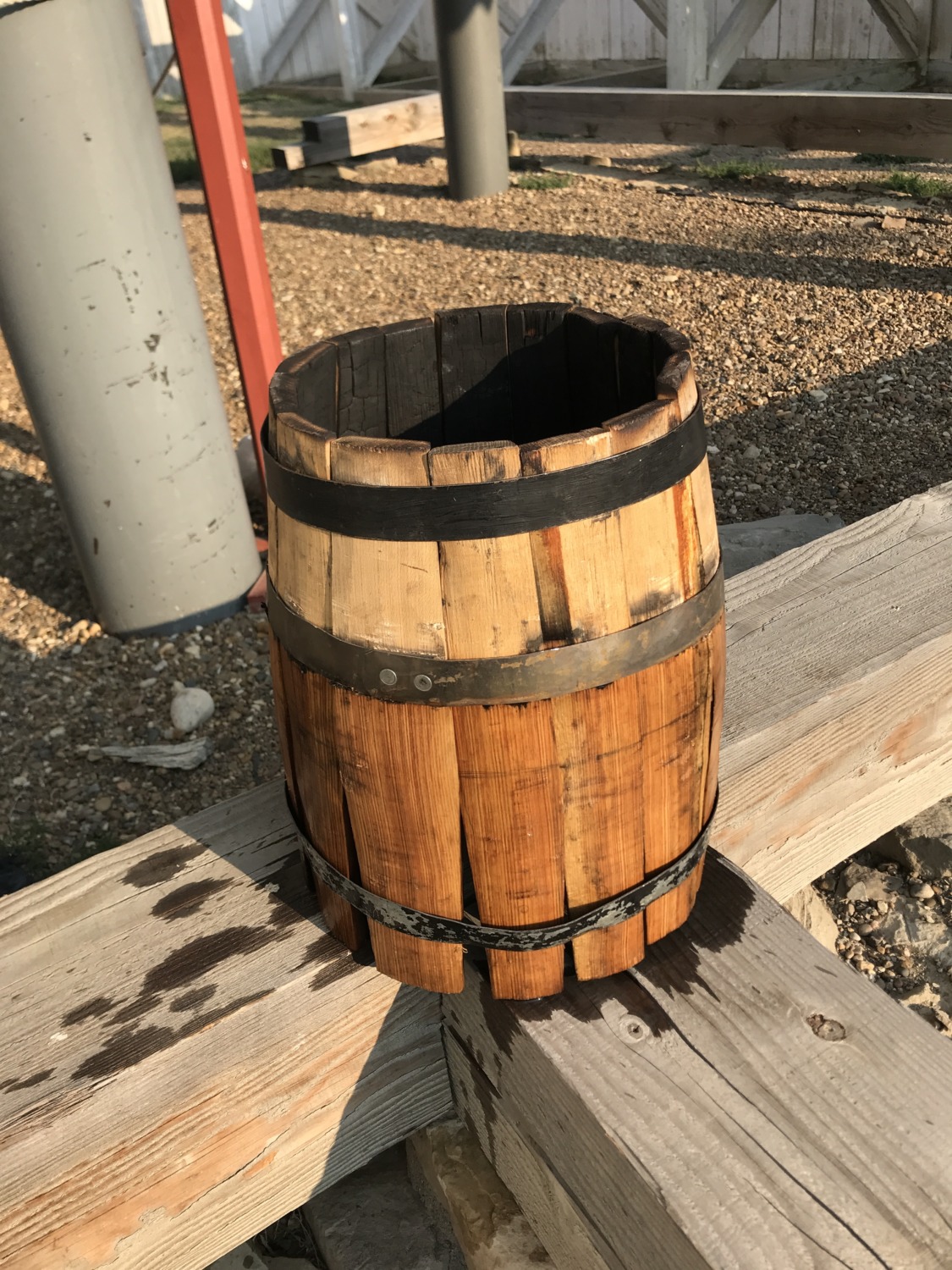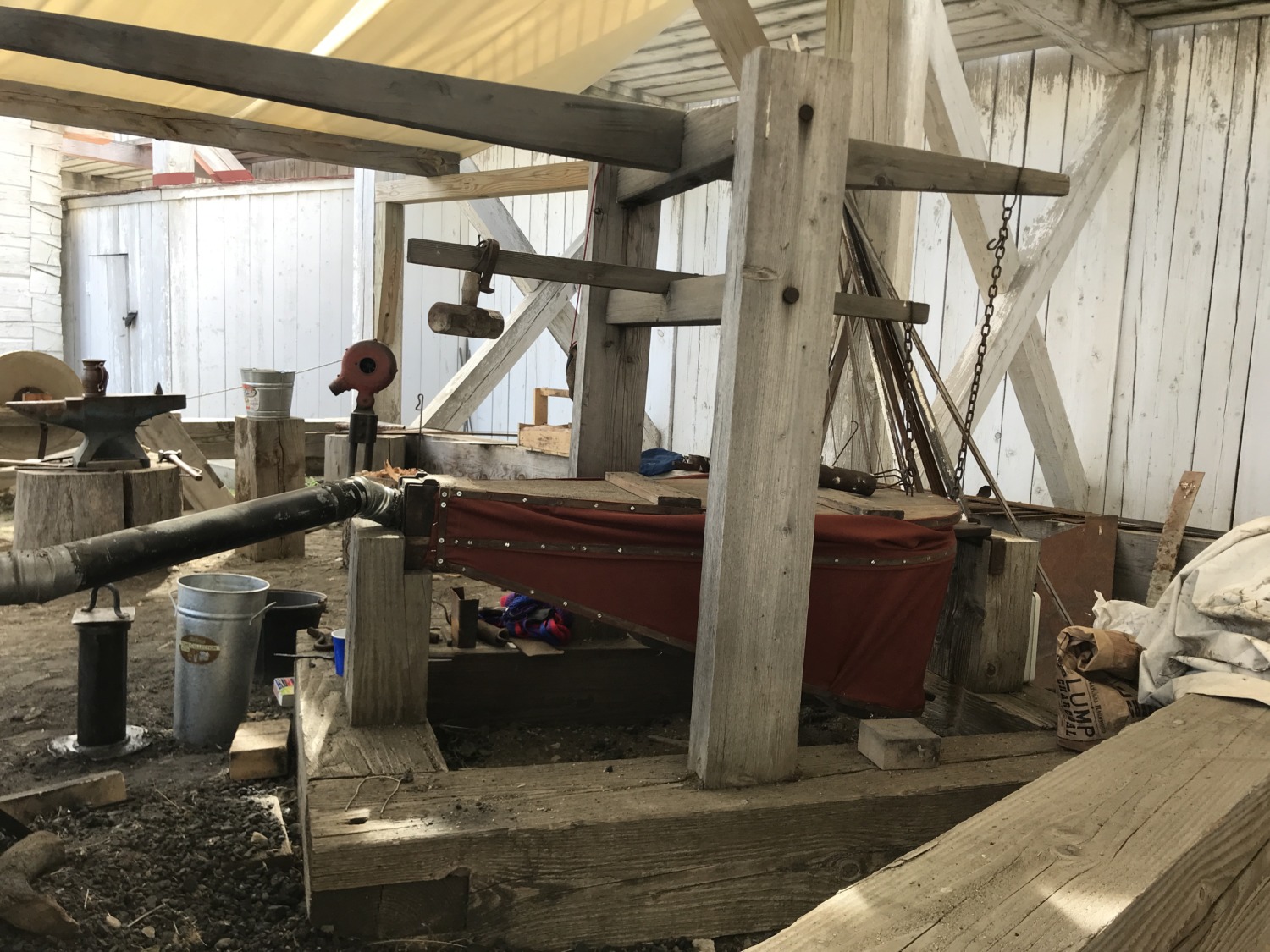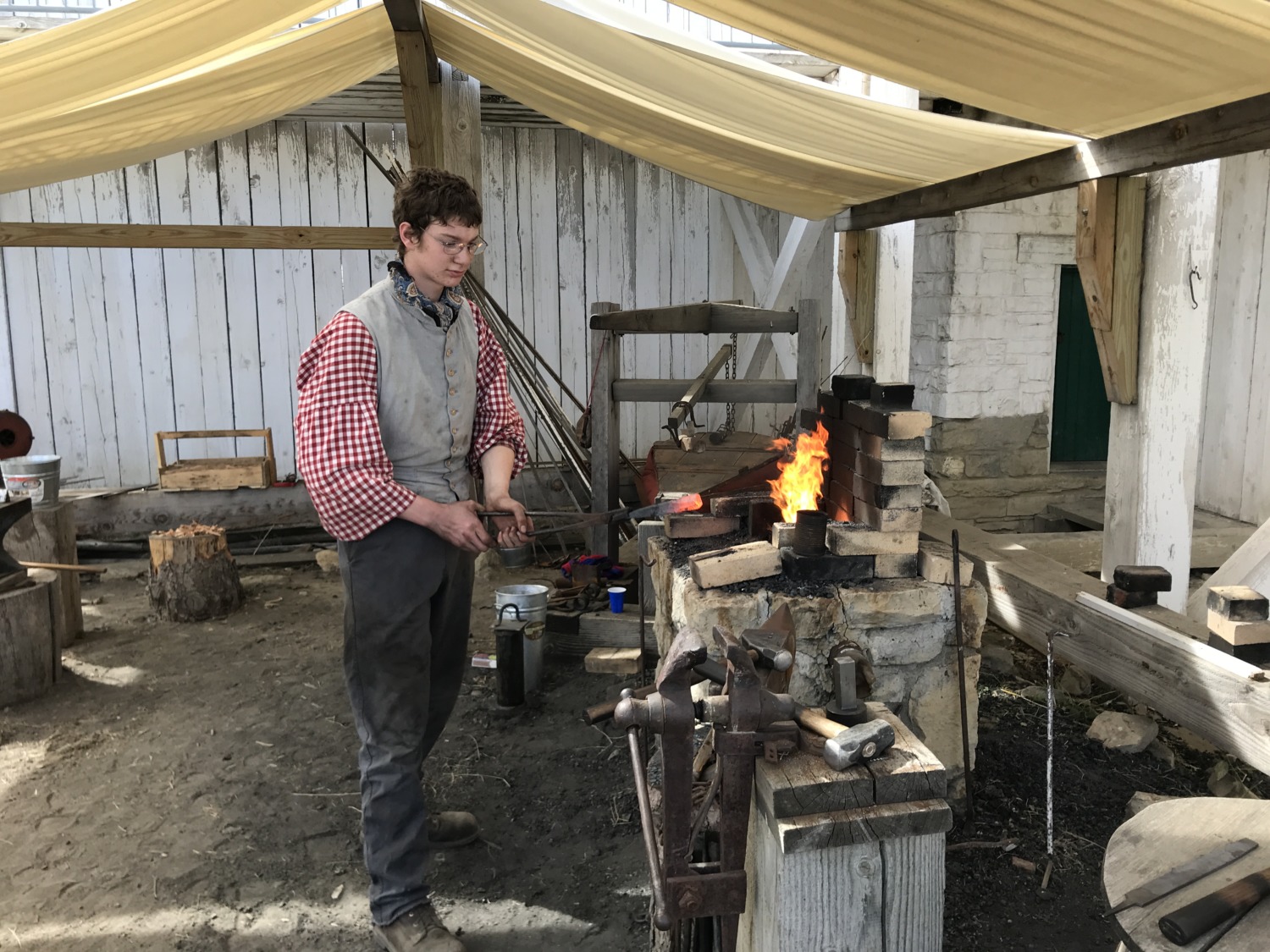During his time here at Fort Union Trading Post, Tom has made a bucket, a barrel, and a bellows. These are all related to his demonstrations and the talks that go along with them, but building them has kept him busy all summer.
Bucket, barrel and bellows Part 1: Ranger Karl knows how to make buckets and did it as his demonstration here at Fort Union Trading Post. Tom was very interested in learning to make buckets while he could apprentice under Ranger Karl.
Fort Union Trading Post had a cooper because they needed someone to make and repair the containers for shipping goods. The supply boat only came up the Missouri River once a year and it was important to be able to repair the buckets and barrels between trips.
By the time we arrived in June, Ranger Karl had already made a couple of buckets. Tom spent a lot of time cutting and carving staves and rasping bucket bottoms. He learned how to use a cooper’s jointer to fit the staves together. Most of the time Tom did all this with Ranger Karl supervising but, for the last month, Tom worked on his own.

Tom wanted to build a bucket, start to finish, by himself, so he was sure that he could do it. The most difficult thing in making a bucket is fitting it so that it holds water. Wooden buckets need water in them continuously or the wood shrinks and they start leaking. When making a bucket, it often leaks at first, but gradually the wood swells up and holds the water.
Tom got his bucket all put together. He had to resize the bottom several times and remake the hoops, but he ended up with a nice bucket. At first it was leaking, so he used cattails and wax to seal up some of the larger holes. Now it holds water very well. He filled it up on Monday and it still had water in it on Wednesday. Tom is very proud of his bucket, as well he should be.

Bucket, barrel and bellows Part 2: Most of the techniques Tom learned for bucket-making also apply to barrels. Barrels, however, are harder because the staves have to curve and fit on the bottom and top. Tom and Ranger Karl found some ash wood hiding in the firewood and decided it would make a nice little keg. They made the barrel, put the hoops on half of it, then soaked the bottom half in water. They put it over the fire to make it easier to bend but the fire was a little too hot and the inside of the barrel got a bit singed. Tom carved out the burned part which made the staves thinner and (hopefully) easier to bend. Right now the half-finished barrel is sitting in front of the cooper’s shack being an object lesson. Tom is hoping he and Karl can finish it before we leave but it may end up just being a talking point.


Bucket, barrel and bellows Part 3: Tom built a bellows for Fort Frederica and then again at Fort Necessity. Both of those bellows had to be built from scratch and both of them worked really well. The bellows here at Fort Union had been built years ago but it wasn’t working any longer. When the volunteer blacksmiths were here for Rendezvous in June, the fabric on the bellows blew out. Tom volunteered to fix it before Living History Weekend.
He carried it over to the Maintenance building with the help of Ranger Jade, our maintenance man. Fortunately there is plenty of room in the maintenance building so he was able to set it up and leave it in the same place for the next six weeks.
Tom started his repairs by taking off the steel bands holding the fabric to the frame. Then he removed the fabric and tried to figure out why the flappers weren’t moving the way they should. He rebuilt the flappers but they still weren’t moving freely. Eventually, after weeks of experimenting and research, he decided the problem was electrostatics. Because the air is dry here, a charge was getting built up on the flappers that kept them from opening. He added some non-conducting cloth, and some conducting graphite lube and the flappers started working the way they were supposed to.

Tom painted some heavy canvas with a silicone coating, let it dry, and then he and I attached it to the frame. When we had it fitting well enough, he reattached the metal bands to hold the cloth on. He also added a chain and stopper to keep the bellows from opening too far, which stresses the fabric covering.

All of that sounds pretty simple, but it took Tom most of his days off for a month. He did a great job and really stuck with it until he got it done right. The guys who worked the forge over Living History Weekend said the bellows worked better than it ever had.

Tom is wonderful at building bucket, barrel, and bellows. He is always eager to learn new things for living history. Give him a few more years of doing this and he would be right at home in 1800. He already looks the part!

